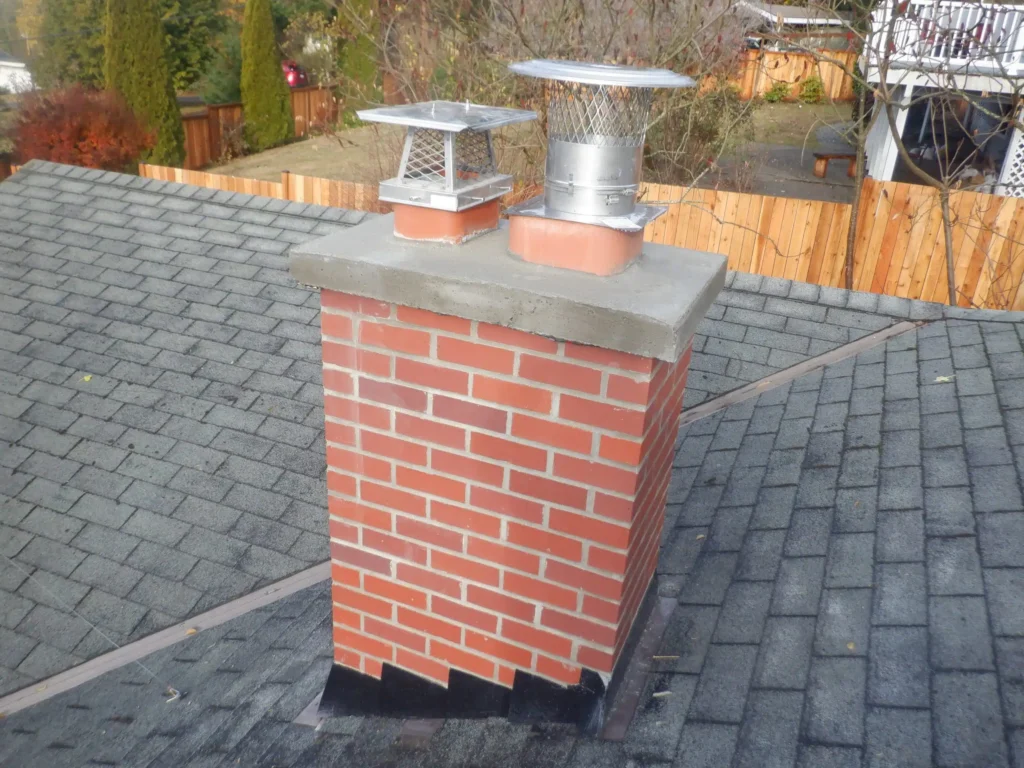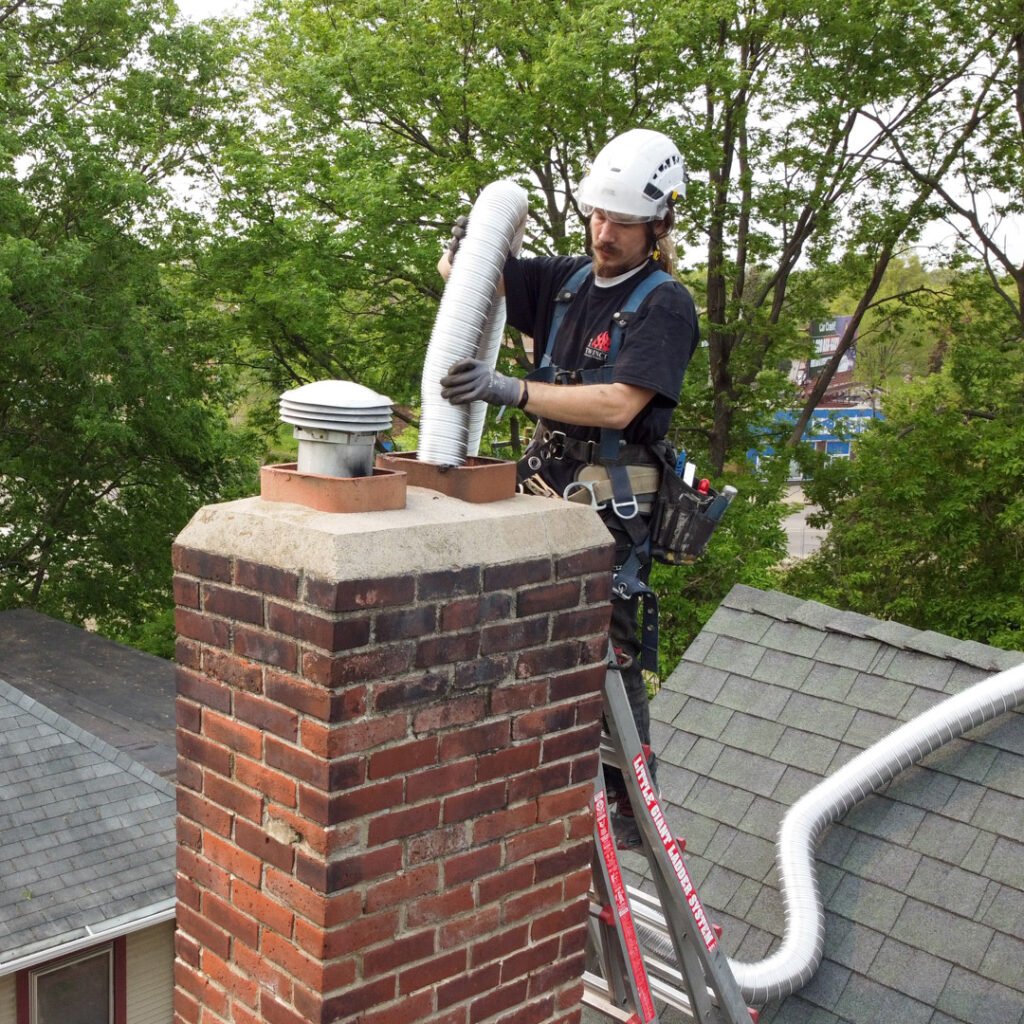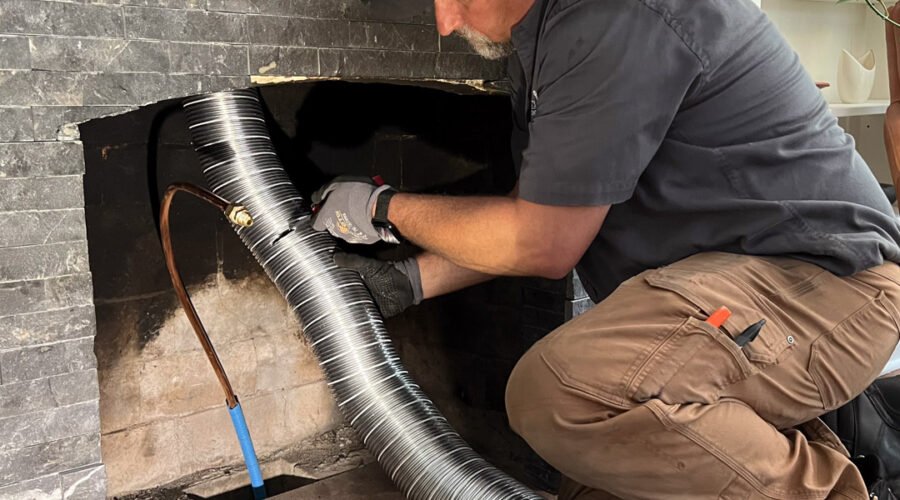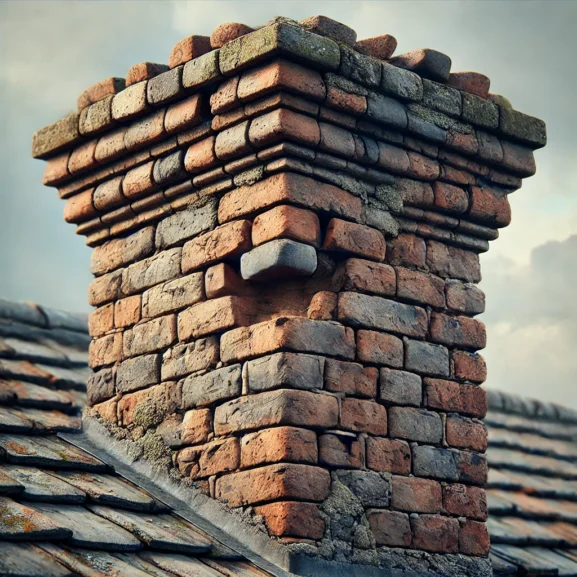Understanding Pitting of Chimney Liners Caused by Corrosive Gases: Prevention & Solutions
When we think about chimneys, we often picture warmth and comfort. Yet, lurking within these structures is a silent threat: corrosive gases. These gases can cause pitting in chimney liners, compromising their integrity and efficiency. It’s crucial to understand how this damage occurs and what it means for our homes.
Chimney liners play a vital role in protecting our homes from harmful gases and ensuring efficient operation. But, when corrosive gases attack, they can lead to pitting—a form of deterioration that weakens the liner over time. This not only affects the chimney’s performance but also poses potential safety hazards.
In our article, we’ll explore the causes of this pitting, how to identify signs of damage, and what steps we can take to prevent it. By understanding these factors, we can safeguard our chimneys and maintain a safe, efficient home environment.

Chimney Liners 101: Everything You Need to Know
Chimney liners are the unsung heroes of your home, keeping harmful gases at bay. They ensure your chimney functions safely and efficiently. Let’s explore their purpose and materials.
Purpose and Importance
Chimney liners play a crucial role in safeguarding against corrosive gases and chemical damage. They protect chimney walls from flue gas effects, reducing safety risks and maintenance challenges. By containing harmful gases, liners prevent them from seeping into homes. They also help with improving chimney efficiency.
In areas where fluctuating temperatures can intensify liner wear, regular inspections are vital. We recommend professionals handle these tasks to avoid DIY mishaps.
Common Materials Used
The liner material matters when combating pitting corrosion and extending lifespan. Typically, chimney liners consist of these materials:
- Clay Tiles: Affordable and long-lasting, perfect unless corrosive gases are present.
- Metal (Stainless Steel): Durable against pitting corrosion and best suited for versatility.
- Cast-in-Place: Seamless, providing excellent liner protection explicitly where chemical damage is a concern.
Knowing the right material for your chimney reduces lifespan reduction concerns. Call us if unsure about the best material for your home.
What Is Pitting?
Pitting refers to small, localized areas of corrosion that form on the surface of materials. In chimney liners, it’s caused primarily by corrosive gases like sulfur dioxide reacting with liner materials.
Definition and Characteristics
Pitting corrosion creates tiny holes that might not seem dangerous at first, but they lead to big problems. These pits compromise the integrity of chimney liners, which affects their ability to protect homes from flue gas effects. With time, these pits grow, making repairs more complex and increasing maintenance challenges. Regular chimney inspections identify pitting early, reducing safety risks and potential chemical damage.
Want a closer look? Imagine Swiss cheese—but remember, edible holes belong in cheese, not your chimney liner.
Causes of Pitting
Several factors contribute to pitting in chimney liners:
- Corrosive Gases: Chimneys face many corrosive gases that eat away liners, especially when burning fuels.
- Moisture: Water combines with some gases, forming acidic compounds that speed up corrosion.
- Material Quality: Lower-quality materials pit faster, compromising the lifespan reduction of liners.
In ever-changing climate, chimneys are subject to more stress from these factors.
Reach out to a professional to discuss inspection plans tailored to your chimney’s needs and ensure long-lasting performance.
Role of Corrosive Gases
Corrosive gases pose significant risks to chimney liners, resulting in pitting, chimney liner damage, and reduced chimney lifespan. These gases can erode liners, causing maintenance challenges and safety risks. Through understanding, we can combat these invisible threats and enhance liner protection.
Types of Corrosive Gases
Several corrosive gases contribute to pitting corrosion on chimney liners:
- Sulfur Dioxide (SO2): This gas often results from burning fossil fuels, leading to significant chemical damage. It attacks liners and creates weak spots.
- Chlorine Compounds: Especially prevalent in areas near the ocean, these compounds can quickly erode protective coatings, making chimney inspections essential.
- Nitrogen Oxides (NOx): Formed during combustion, these gases increase flue gas effects, further wearing down the liners.
Sources of Corrosive Gases
Understanding where these gases come from helps us better protect our chimneys:
- Fossil Fuels: Burning oil, coal, or natural gas in fireplaces produces corrosive gases, just like sulfur dioxide and nitrogen oxides.
- Household Cleaning Products: Using bleach or chlorine cleaners can release harmful vapors, so they should never be used near chimneys.
- Industrial Pollution: Even residents may notice industrial emissions contributing to gas buildup, particularly in urban areas.
Recognizing these sources assists in preventive measures, reducing the risk of severe liner damage.
Effects on Chimney Liners
Corrosive gases can cause real harm to chimney liners, leading to both immediate and long-term issues. Let’s explore the short and long-term effects these gases can have on your chimney system.
Short-Term Impact
Pitting corrosion occurs quickly when corrosive gases like sulfur dioxide and nitrogen oxides enter the chimney. These gases form tiny holes in the chimney liners, compromising liner protection. These holes risk letting dangerous fumes seep into your home. Yikes! Increased safety risks demand prompt attention. Without regular chimney inspections, small damages might go unnoticed, leading to greater chemical damage. If you’re in areas where weather can speed up these processes, so inspections are crucial.
Long-Term Consequences
Left unchecked, the flue gas effects continue deteriorating liner quality over time. As holes expand, they create significant maintenance challenges, elevating risks and costs. The lifespan reduction of your chimney liner leads to frequent repairs or replacements—ouch! Moisture and cold winters can exacerbate these issues. Major maintenance headaches can be avoided by consulting specialists early.
Remember, we don’t advise on DIYs. Instead, get peace of mind with expert services from approvedchimney.com tailored for your needs.
Prevention and Maintenance
Maintaining chimney liners is key to preventing pitting corrosion caused by corrosive gases. Let’s explore what can be done to keep things flowing smoothly, just like those delicious bagels.
Regular Inspections
Chimney inspections help catch issues before they become safety risks. We recommend scheduling annual inspections to spot pitting early. In areas where the weather can go from snow boots to flip-flops overnight, such inspections are even more critical. Professionals assess flue gas effects and check any damage progression.
Regular checks mean fewer maintenance challenges later. If you want more on chimney inspections, the Chimney Safety Institute of America (CSIA) offers helpful guidance.
Protective Measures
Taking protective measures extends the lifespan of chimney liners. A good start is to use high-quality materials that resist chemical damage. Chimney caps also help keep moisture and debris out, reducing corrosion risks. Fuel choices matter too; cleaner fuels mean fewer corrosive gases.
Professional maintenance plans, tailored to your chimney’s needs, ensure liner protection. Chimney covers and regular cleaning also safeguard against unexpected surprises, unlike finding a squirrel in your flue. For more tips on flue protection, see the National Fire Protection Association’s resources.
Remember, it’s essential to leave chimney care to the experts to avoid costly DIY disasters. Reach out to certified professionals for a consultation.

Repair and Replacement Solutions
Finding the right fix for pitted chimney liners caused by corrosive gases can feel like deciphering a secret code. Let’s simplify it with a touch of humor and loads of useful info.
When to Repair
Repairing chimney liners is like giving them a little spa day—sometimes, that’s all they need! If pitting corrosion hasn’t severely compromised the liner, repairs can extend its lifespan. Look for:
- Minor Deterioration: Small pitting spots and localized chemical damage can often be patched.
- Timely Inspections: Regular chimney inspections help catch issues early. In places where drastic weather swings mean repairs should be prompt.
- Maintenance Challenges: Notice increased flue gas effects or chimney odors? It might be patch time. But if too much DIY starts looking like a sitcom, reach out to certified professionals for help.
These repairs stop small issues from becoming big safety risks, ensuring your cozy nights stay worry-free.
Opting for Replacement
Sometimes, it’s best to trade in the old for new—like deciding the beloved family station wagon has seen its last road trip. Opt for replacement when:
- Severe Corrosion: Extensive pitting corrosion means it’s time for a new liner. The integrity’s gone; let’s fix that fast.
- Safety Risks: Compromised liners allow harmful gases to seep into homes. Prioritize family safety by choosing a full replacement.
- Repeated Fixes: Constant repairs signal that replacements could be cost-effective long term. Liner protection stands stronger with new materials.
Replacement minimizes long-term maintenance challenges and boosts chimney performance. Reach out to certified professionals for a consultation. Check reputable sources like the Chimney Safety Institute of America or the National Fire Protection Association for more info on fire safety and guidelines.
The Importance of Addressing Pitting and Proactive Maintenance
Addressing pitting in chimney liners is crucial for maintaining the safety and efficiency of our homes. By understanding the impact of corrosive gases and the importance of regular inspections, we can prevent minor issues from escalating into costly repairs. Utilizing high-quality materials and seeking professional guidance ensures our chimney systems remain robust against the elements. Let’s prioritize proactive maintenance and expert consultations to protect our homes and families from the hidden dangers lurking within our chimneys.
Frequently Asked Questions
What are the main dangers of not inspecting chimneys regularly?
Without regular inspections, small damages like pitting in chimney liners can escalate, allowing harmful gases to enter homes and increasing safety risks. Over time, this can lead to costly repairs or the need for a full liner replacement, especially in climates with variable weather.
What materials are commonly used for chimney liners?
Chimney liners are often made from clay tiles, stainless steel, or cast-in-place materials. Each material has its benefits, so it’s essential to consult with a professional to choose the best option for your home’s specific needs and environmental conditions.
How do corrosive gases cause damage to chimney liners?
Corrosive gases such as sulfur dioxide, chlorine compounds, and nitrogen oxides erode chimney liners through pitting corrosion. These gases originate from fossil fuel combustion, cleaning products, and pollution, creating holes in the liners that compromise their integrity and safety.
Why is pitting in chimney liners a concern?
Pitting refers to small, localized corrosion areas, leading to tiny holes in chimney liners. This weakens the liner, necessitating more frequent maintenance and increasing safety hazards as harmful fumes could seep into living spaces if unchecked.
What are some preventive measures for maintaining chimney liners?
To maintain chimney liners, schedule annual inspections to catch early signs of pitting, use high-quality materials, install chimney caps to prevent debris entry, and opt for cleaner fuels to reduce corrosive gas exposure. Professional maintenance plans are also recommended for tailored care.
When should a chimney liner be repaired versus replaced?
Minor pitting can often be patched if identified early through regular inspections. However, if the liner experiences severe corrosion or repeated repairs, a full replacement might be necessary. Replacement enhances safety and improves chimney performance.
How do temperature fluctuations impact chimney liner durability?
In areas with variable climates, temperature fluctuations can exacerbate wear on chimney liners. The expansion and contraction of materials under different weather conditions can lead to increased damage, making regular inspections and maintenance crucial.
What role do professional inspections play in chimney maintenance?
Professional inspections help identify early signs of deterioration, such as pitting, and assess the liner’s overall condition. Experts can provide tailored advice on maintenance and repair solutions, helping to prolong the lifespan of the chimney system and ensure safety.

